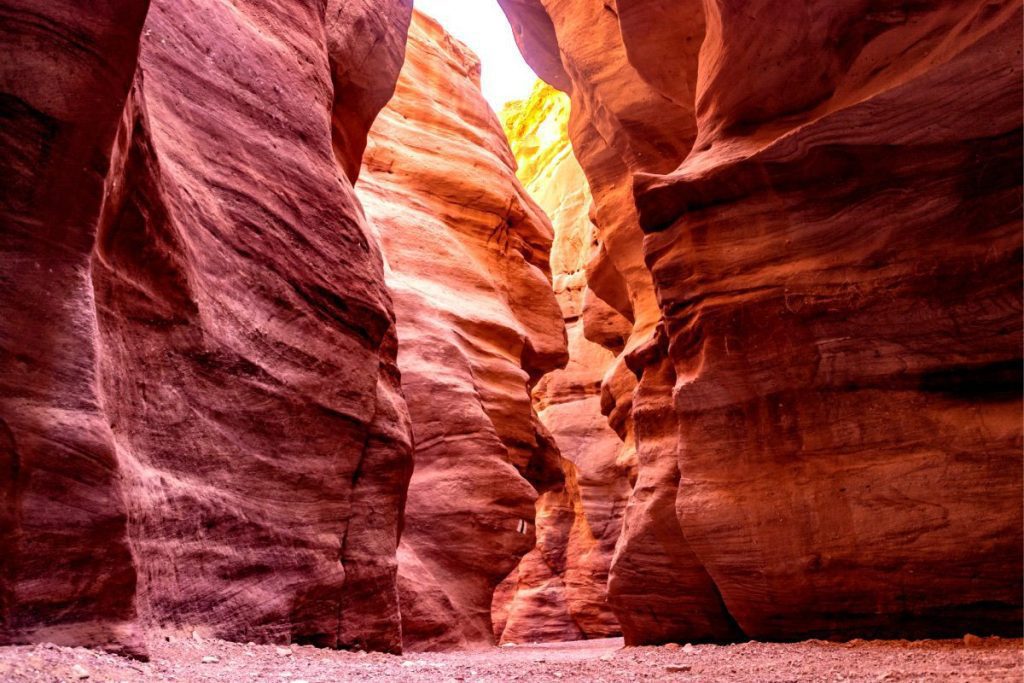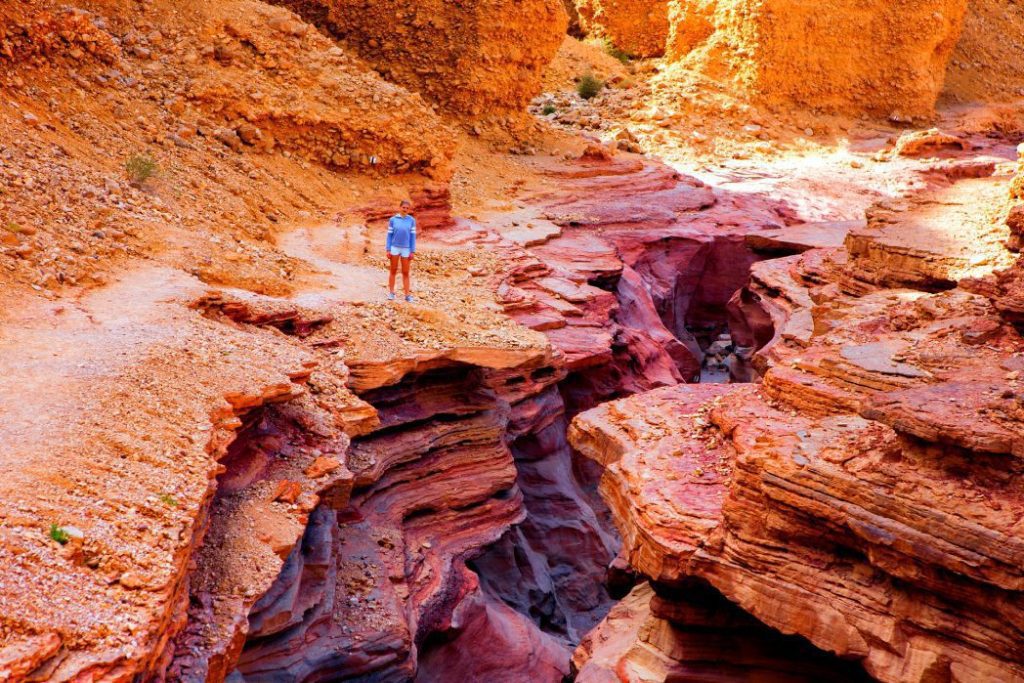The Red Canyon is located about 20 kilometers north of Eilat west of the road to Eilat at an altitude of 700 meters above sea level. The length of the canyon is about 200 meters and its depth is about 30 meters. So the Red Canyon also has the age of downcutting that began following the lifting and the creation of a high relief at the edge of the low rift.

These altitude differences and rainy climates greatly accelerate the processes of downcutting. That is, the Nahal Shani rift is late to the formation of the Dead Sea Rift better known as the Syrian-African Rift. And here’s the problem. Also, there is still no complete dating of when exactly the rift happened. It is clear that this is a very young event (geologically) and it can be said with certainty that it is 20 million years younger and 5 million years older.
More About The Red Canyon In Eilat
It is estimated that in the southern region the rift begins to form around 10 million years ago. From this, it can be assumed that the age of decline of the Red Canyon (Nahal Shani) is between 5-10 million years. Moreover, the canyon is partly narrow and several meters wide. The upright walls are made of reddish Nubian sandstone. Also, the color red comes from iron oxides. So the descent to the Canyon is possible with the help of a peg ladder and a pipe railing. In ancient times, tigers were hunted on the spot and enticed to enter a closed stone structure using a goat or lamb and the animal was blocked and captured with a heavy stone taken from the area.

In the canyon and in the river, there is sparse vegetation that includes the desert Retama, the thorny snipe of the Negev Acacia, and Tamarisk trees. Eilat Field School offers tours and tutorials to the Canyon. Also, the entrance to the walking route includes a walking section of about a kilometer and a half or alternatively an arrival with the vehicle on the kurkar road. The parking lot has a large map and there are often tourist information sheets. Recently, chemical toilets were installed in the parking lot. There is no water source on the site. You can read more about the Red Canyon in my post about Hiking the Red Canyon.







